How to Shop at Discount Stores Without Looking Cheap
by Jill Filipovic and Ines Garza
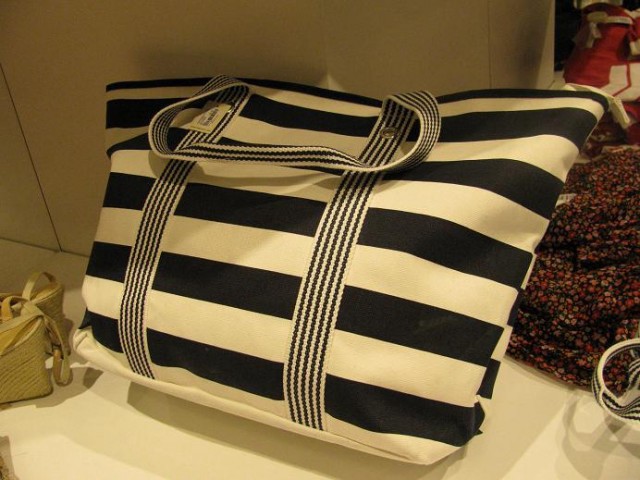
You know that lady, maybe a friend, who always looks really great and when you ask her where she got that shirt she’s like, “Forever 21!” and it’s confusing because when you walk into Forever 21, you’re disoriented by pulsating Euro-rap and racks of extra-small leggings and you end up walking out with a bedazzled denim jacket and rayon hotpants that give you hives? And you know that other lady, who’s definitely not your friend but maybe you see her at a bar, and she’s wearing some kind of dress with maybe a bubble hem or a bow around the empire waist and in your head you’re like, “Nice Forever 21 dress,” but you don’t mean it in a nice way at all?
We’re here to teach you how to be the first lady.
First: Know What You’re Looking For
Before you go shopping, look for inspiration. You can find this almost anywhere, but the best place to start is by checking out pretty girls you pass on the street. This requires actually looking at what the pretty girl is wearing instead of just registering “pretty girl is pretty.” Take notice of how she wears things. That’s a cool skirt, what’s she wearing with it? What kind of shoes are those? If she’s layering, how is everything proportioned? Especially keep an eye out for pretty girls with your body type.
When you’re paying attention to people on the street, store windows (someone gets paid a not-small amount of money to dress mannequins at Barney’s, so walk by and see what’s up), and pictures online (NYMag’s fashion section, Style.com, and Refinery29 are good places to go), try not to get bogged down by details. Instead focus on basic themes, colors, and shapes. Think “neon,” not “an exact replica of that one neon yellow Miu Miu dress,” and you’ll be surprised how many nearly-identical items you can spot in the mall/chain stores.
Decide what you kinds of pieces you need. Cheapo stores are usually enormous and overwhelming, with all kinds of crap mixed in with decent stuff. So shop with an event or purpose in mind — “I need a new going-out top” or “I’d like a day dress that I’ll wear all summer.” Focus on scoring basic items that are in style now, since that’s what these low-cost stores can do really well. There’s no need to drop major cash on a striped shirt or a nautical tote or a bold-colored skirt at a high-end store when you can just as easily get one at H&M.
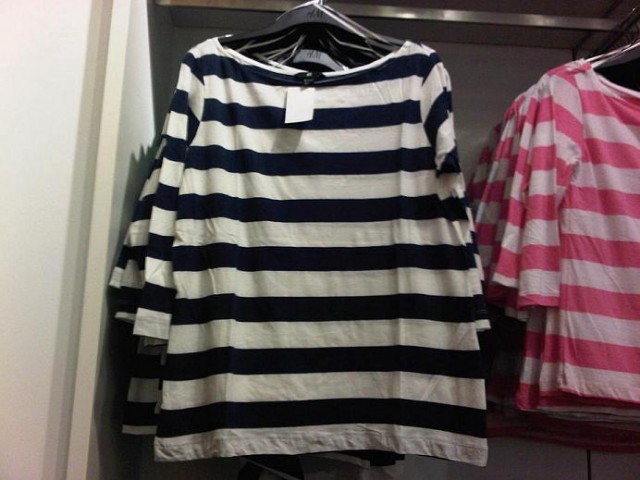
Also, think about finding pieces that can help update and transition your existing wardrobe. Already have a bunch of tank tops? Look for a maxi skirt, bright pants, or a pair of neon pointy-toe shoes to make them look fresh. Own 15 pairs of shorts from last year? Look for espadrilles, wedges or chunky sandals to pair them with, and maybe a sheer top. Accessories are great for updating existing pieces. Low-cost stores are full of super-cheap jewelry, bags and shoes that, though not built to last, can make your old clothes feel sort of new again.
Second: Know What Not to Buy
Before you head into these discount emporiums, it’s important to be armed with the knowledge of the things you absolutely should never buy there. That way you won’t have to waste time getting distracted by items in these categories, and you can focus on finding things that you might actually want. Here are the universal “do nots” for shopping at cheap stores.
Do not buy anything in stretch lace or fake leather. They will always look cheap, so don’t bother. The one exception to the fake leather rule is a bag or a pair of shoes, but if you do that, (a) make sure the item doesn’t have a shiny sheen if it’s not meant to be patent, (b) make sure the item has some characteristic that makes it visually interesting enough to distract from the material — a bag in a great new shape or a combination of striking colors, for example, and (c) don’t let anyone touch it, because that’s how you get caught with a crappy bag. For instance, some good bags and shoes:
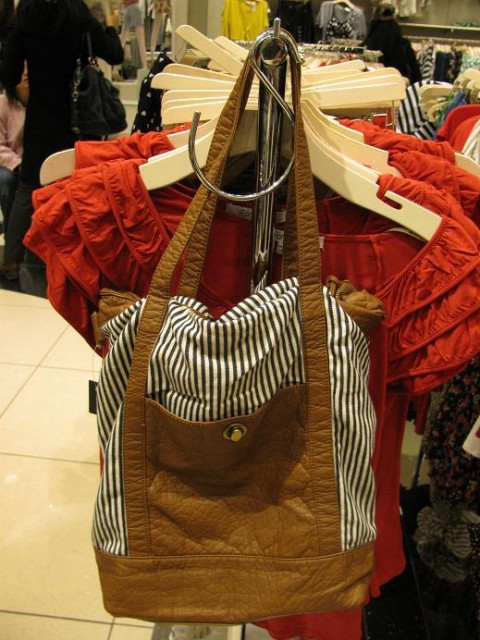
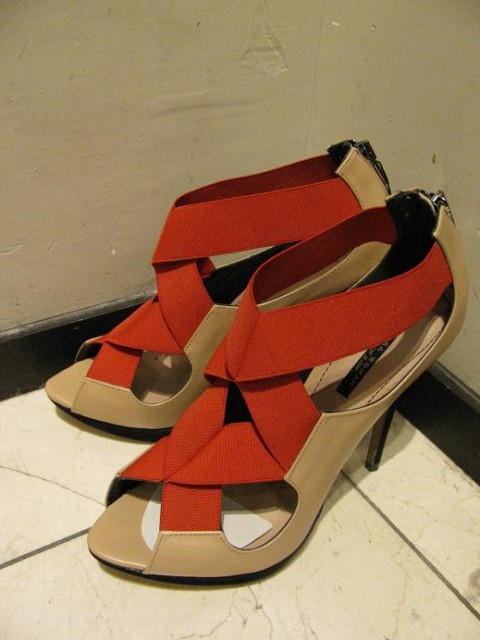
Do not buy lingerie. Sorry, but that stuff is right up against your skin in the most important/fun/sensitive parts — not the place to cut corners. Go to Filene’s Basement or Nordstrom Rack and get the good stuff at a discount.
Do not buy anything too juvenile. That means staying away from things with elastic ruching on the top or on the waistband; any print, embroidery, or other detail that involves butterflies or hearts; or shirts with words on them.
Do not buy things adorned with knock-off logos. An almost-identical print, shape, or color is OK, like this H&M; skirt that looks like it could be Prada, but an almost-identical brand logo is not. Just say no to bags with patterned LVs or mirror-image Gs or flats with kinda-like-Tory-Burch gold plates on the toe. Also? Even the real versions of those things are kind of terrible, so unless you’re a Real Housewife and are getting paid to be terrible, stay away.
Do not buy spandex unless the piece is worn as an undergarment. You want to be the nice lady whose ass looks hot in H&M; pants, not the tragic lady whose ass you can see through her H&M; pants.
Third: Pick a Piece
OK, now you know what you’re shopping for (and what you should stay away from). The next step is to actually step foot in a store and look for things you might want to buy. When you see a piece that fits your bill, there are a few things to think about before you decide to buy. Low-cost clothing manufacturers cut corners to keep prices down; they try to use as little fabric as possible, and they tend to only add the cheapest details. Looking at the details can help you pick a looks-expensive piece out of a pile of clothes that look like they’re from the $1 bin.
1. Touch it and check out the fabric.
– Most fabrics, and especially the fabric on basic cotton pieces, should be soft to the touch. Cotton shouldn’t be stiff; nothing should feel scratchy.
– Be careful with anything shiny. Shiny can look real cheap real fast:
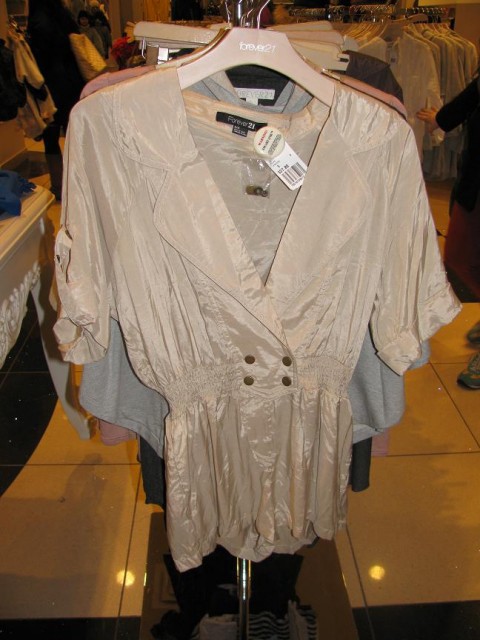
-Buy pieces that are made with a fabric that holds the shape. If you want a drapey dress, you should be going with jersey. Avoid techno jerseys — just go with the cotton and modal blends. If you want a fitted dress, the fabric needs to be stiffer (but not uncomfortably so) — no one wants lumps and bumps under cheap (also known as “fake”) silk. These shorts are a good example of an appropriate heartier fabric for that garment:
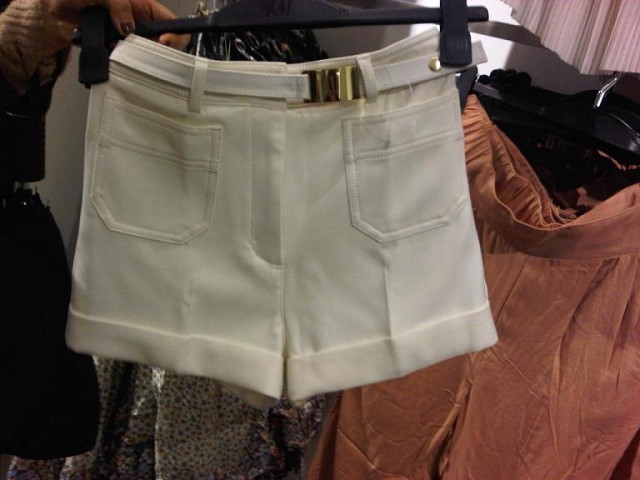
– Going for the jeans table is fine, since these stores often do denim well — just be mindful of unflattering butt details. Fit is the biggest concern, so make sure you find a style that works well on your body. (Public service announcement: BDG stretch jeans from Urban Outfitters are cheap, amazing, and comfortable, and now come in a high-waisted cut if, like us, you enjoy the belly-covering Mom feel.)
2. Look at the construction.
– Stitching should be tight, small, and almost invisible, unless it’s purposeful contrast-stitching.
– Fabric should be even across the stitch. If a sleeve is bunchy around the armpit or if a hem is uneven, it’s a no.
– Avoid pieces with lots of hardware (like buttons and metal details). Low-cost stores will use the cheapest metals, which can make the whole piece look bad (and make you break out in rashes).
– Some pieces, like leather belts with buckles, are just not going to look right if you buy them on the cheap. For instance, Forever 21 is not using real leather here, and they’re using cheap metal for the buckle, which shows. Get fabric or elastic belts from the cheap places, and go a step up price-wise for real leather and better-quality metallics.

– Look for hem detailing that requires use of extra fabric, like scalloping as opposed to a straight hem — like these skirts:
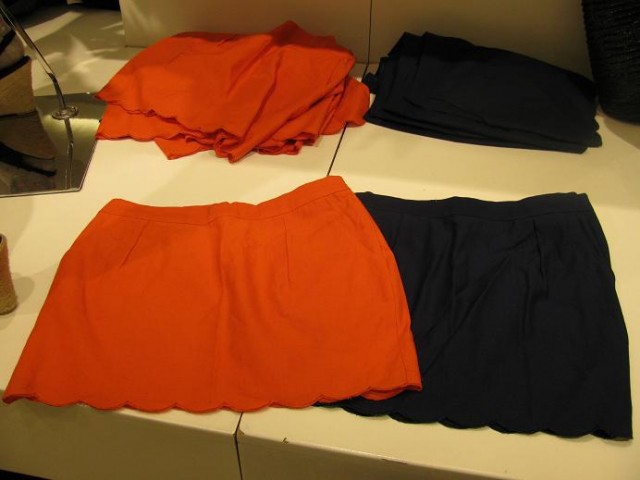
– Zippers can make or break the look of an item. If the zipper is obvious, it should be well-made; a small, chintzy, obvious zipper can ruin a garment. If you like a piece with an exposed zip, make sure it sits flat. The zipper tape and zipper itself shouldn’t look cheap. Here’s a good zipper:
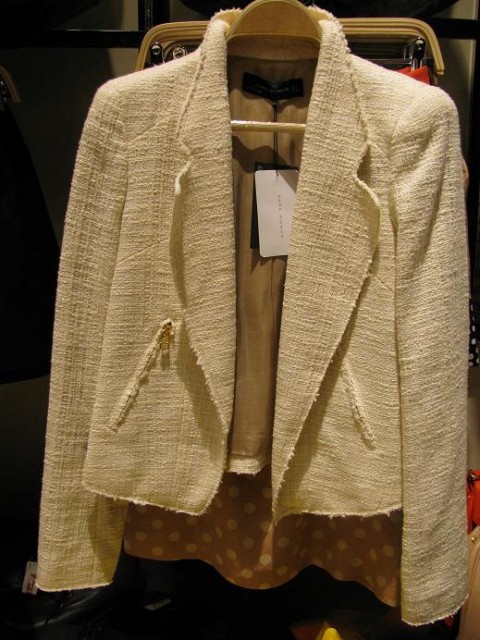
– If a piece has beading, sequins, or lots of sewn-on fabric detailing, eye it carefully. It shouldn’t look like a 12-year-old went at it with a bedazzler. (You shouldn’t ever say something like, “Well from far away it looks fine.” No, it doesn’t.). There should be no visible seams where fabric details are attached. Sequins should be tightly sewn without obvious threads attaching them, and if there’s beading, it needs to be extremely detailed and fairly dense to look good. Large embellishments, like inch-tall jewel details, should be cleanly affixed to higher-quality, dense fabrics — they shouldn’t be obviously weighing fabric down or pulling it, and they should be attached without obvious glue or thread.
3. Think about the bigger picture.
Obviously if you’re happy with the construction and the piece seems promising, you should try it on. If the fit is flattering and you like the look, then you’re golden. However, even if the item isn’t 100% perfect once you get it on, there are still some ways to perk it up and/or make it look more expensive.
– Add a (nice) belt over an elastic waist. Discount stores love the black elastic waistband because it’s flattering on your body, and it’s cheaper than actually tailoring the item properly. The problem? It’s ugly, and it exists almost universally on cheap items of clothing. Solution? Cover it up with a nicer belt. Here’s that elastic waist:
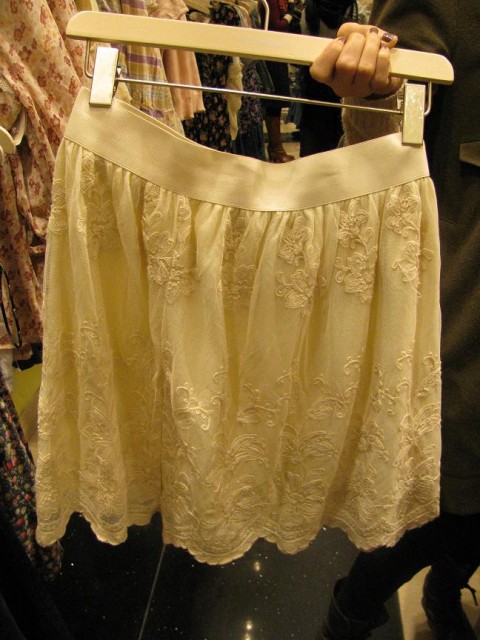
– Just belt things generally. Discount store clothing is not sized as consistently as the clothing produced by a single designer. Try adding a belt (purchased somewhere other than Forever 21) to a slightly ill-fitting garment and see if it helps the fit. Belting also adds another dimension to the outfit, making the whole thing look more put-together.
– Layer. A great jacket over a cheap dress makes everything more interesting, and a more complicated outfit can distract from pieces that have less-than-ideal construction. But if you’re going super-minimal, every piece has to look perfect and the silhouette has to look clean — totally doable even in the most affordable clothes, but things have to fit properly and fabrics have to look luxe.
– Get items tailored to fit you. This can be a great upgrade to cheaper clothes, but there are some major caveats. First, consider whether it’s worth the added cost of tailoring. If you’re paying $19.50 for a jacket that doesn’t quite fit right, it only makes sense to get it if the jacket is so great that you would pay $50 for a well-fitting version. If the jacket’s not that great, skip the whole thing and look for either a cheap jacket that fits or a cheap jacket that’s slightly imperfect but that you’d be willing to pay more for. Second, know what can be tailored. Unless you find a $350 jacket at a sample sale for $35, it’s probably not worth tailoring much more than the length of the sleeves. If a jacket is too wide or too narrow in the shoulders, or if you want it to nip in more at the waist, that’s an expensive fix. It’s cheap and easy to hack off a few inches on a skirt or straight-leg pants; it’s less easy to do that on bell-bottoms, where the flare needs to start at a particular place on your leg or on a skirt that gets really full at the bottom. If you’re buying a super-trendy item to wear a handful of times, it can be better to wait until you find a version that actually fits.
OK! By now you’ve hopefully found some things that you like the look of and that fit you well. Now the fun part: bring them home, put on a man’s watch and some bright lipstick, and fool everyone with your $40 ensemble!
Jill Filipovic is the editor of Feministe, and has broken the bar in her closet three times. Ines Garza is the fake name of a lady who works in the high-end fashion industry and should not be telling you how to buy knock-offs. Neither of them has clothing-related credit card debt.